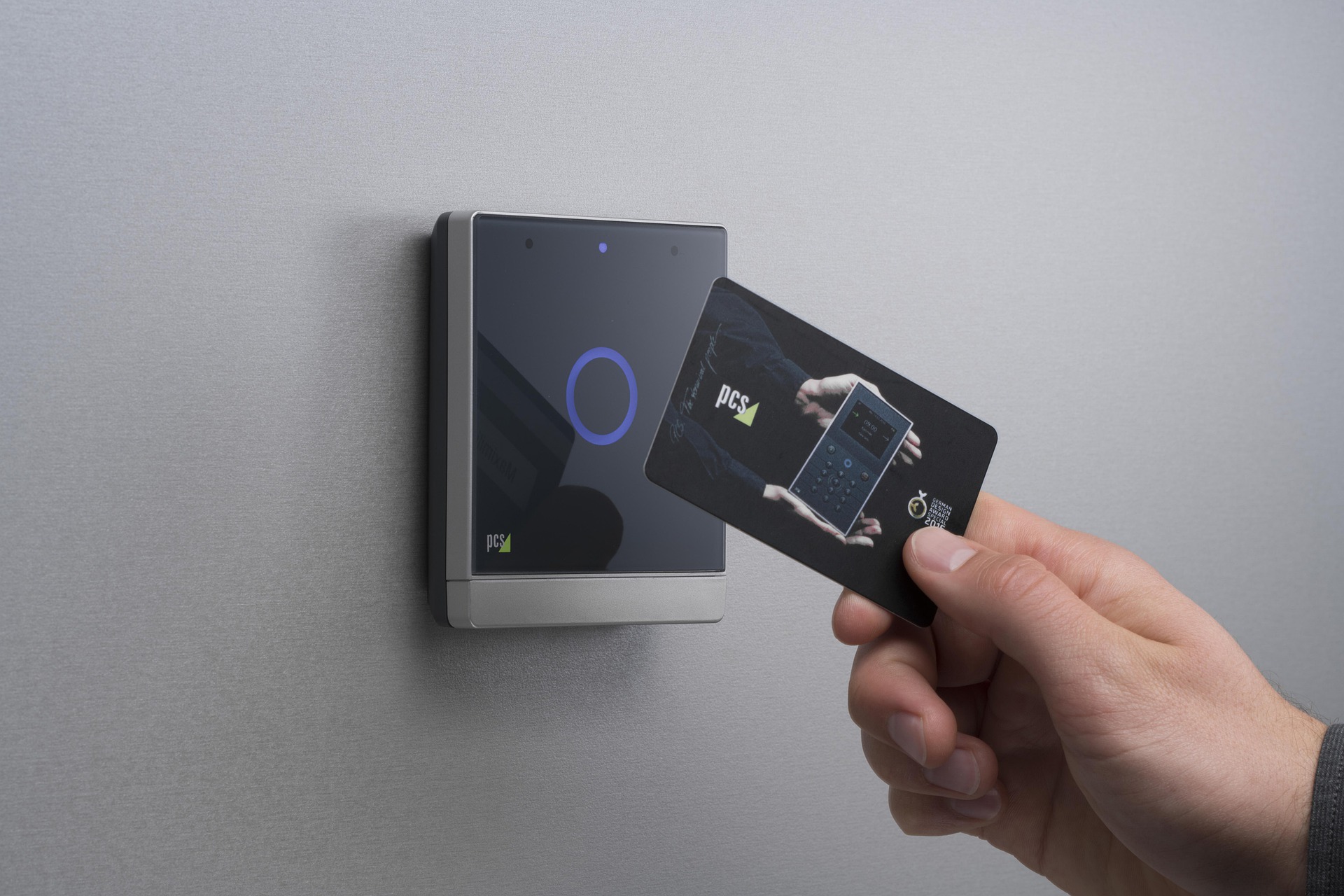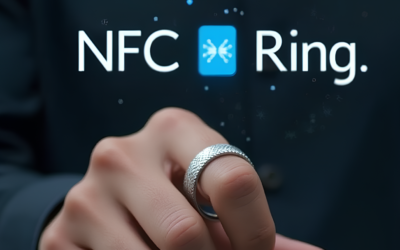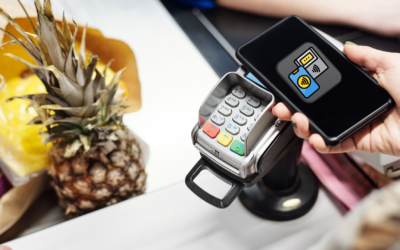The NFC and RFID technologies are so widespread today that we probably don’t spend a day without using them. From contactless payment cards to identification cards and inventory tags, individuals and businesses use these technologies without even realizing it. But you may wonder in what ways they’re similar and different.
NFC is a subset of RFID. Both use radiofrequency waves to transmit data and communicate. But RFID is more expansive with three frequency ranges and is suitable for tracking. NFC is short-range, so it’s better for two devices in proximity, such as information sharing and contactless payment.
Read on for a rundown of the two technologies, how they work, and their uses. We’ll also talk about the difference and similarities between the two technologies.
What’s NFC?
Near-Field Communication (NFC) — as the name suggests — enables short-range communication between devices. The communication needs one transmitting and one receiving device.
NFC devices are either passive or active. Passive devices like tags send data to NFC receivers. They don’t need a power source but can’t process data sent from other devices and can’t connect to or communicate with other passive devices.
On the other hand, active devices, such as smartphones and public transport card readers, can send and receive data and communicate with active and passive components.
How Does NFC Work?
Near-field Communication works the same way as Bluetooth and wi-fi and sends information through radio waves. In this sense, it’s a form of RFID technology that transmits data through electromagnetic induction.
Data transmission occurs at a frequency of 13.56 megahertz and 106, 212, or 424 kilobits/second. It can transmit different data formats, including contact details, pictures, or music.
NFC has three modes of communication that determine the kind of transferred information. The most commonly used mode in smartphones is peer-to-peer. In this mode, two devices send and receive information and can be active and passive.
Read/write mode is a one-way method of data transmission in which an active device reads information from a passive component. An example of this mode is NFC advert tags.
And finally, card emulation is a mode where an NFC device, such as a smartphone, works as a smart card to make payments or act as a public transport card.
What’s RFID?
RFID (Radio Frequency Identification) is a not-so-new technology that employs radiofrequency waves in a wireless and non-contact way to transfer data. It’s part of a group of technologies called Automatic Identification and Data Capture (AIDC). These technologies work with no human intervention to identify things, gather data about them, and automatically send the data to computer systems.
RFID systems operate on three components: an antenna, a smart label or RFID tag, and an RFID reader. An RFID tag has an integrated circuit that transmits data via an antenna. The data goes to the RFID reader, which converts the transmitted radio waves to another form of usable data.
The collected data goes from the tag to a host computer system via an interface. More sophisticated systems use multi-port readers, several antennas and cables, software packages, and GPIO boxes.
The reader is the system’s brain, an essential part of the system that communicates with the tag through radio waves. Also called interrogators, readers are of two types: fixed and mobile. A fixed reader is in one location, usually mounted on stationary positions. Mobile readers are more flexible because they can move to different places while communicating with the host computer.
The RFID tags can be active or passive, with the latter having no power sources and receiving energy from the electromagnetic field that the reader produces. Passive tags function in three RFID frequency ranges: low frequency and high frequency (which work within a few centimeters) and ultra-high frequency (functioning on over one meter).
The tag allows for automatically giving a unique identification to objects. It uses radio waves to transmit data about the object to the antenna and the reader. Reading the tags doesn’t require a straight line of sight and ranges from several inches to over a couple of feet, depending on the RFID type.
The tag protects the antenna and the circuit with protective material to shield them from environmental conditions. Depending on the application, the protective material can be plastic or metal. For example, ID badges use durable plastic.
How Do RFID Devices Work?
The RFID system stores the chip’s information in non-volatile memory. When the reader sends an encoded radio signal, it practically “interrogates” the tag, which receives the message and sends its ID information as a response.
This information may be a uniquely assigned serial number, a stock number, production date, batch number, or any information related to a product. It can also help locate and track personnel, the same as tracking products.
RFID Technology Uses and Applications
RFID isn’t a new technology and has been around since the Second World War when armies used it to distinguish between their airplanes and their enemies’ airplanes. Since then, it’s come a long way and has a wide array of uses, including:
- Personal tracking
- Inventory management
- ID badging
- Asset tracking
- Tolling
- Animal tracking
- Supply chain management
- Jewelry tracking
- Marketing campaigns
- Healthcare tracking and monitoring
- Vehicle tracking
- Access control
The uses of RFID technology can be much broader than this list, depending on the industry. The most crucial difference between RFID and other identification technologies is that it’s more efficient and quicker in identifying individual items.
NFC and RFID Differences
Although both technologies use radiofrequency waves to transmit data between devices, they’re different.
The most important distinction between these two technologies is that NFC devices can be passive and active simultaneously. This feature makes RFID a one-way data transmission process. On the other hand, NFC is a two-way communication process that enables devices to send information back and forth.
Plus, although NFC uses RFID protocols, it’s short-range because of its frequency. However, ultra-high frequency RFID devices can operate at longer distances.
NFC is a newer version of RFID with more capabilities, primarily due to new generations of NFC-enabled smartphones. This way, every smartphone can be an NFC device, eliminating the need for reader infrastructure.
On the other hand, since RFID technology is much more comprehensive, it has a wider range of uses and applications. While NFC’s primary use is related to information sharing and contactless payment, RFID encompasses many tracking applications.
And finally, NFC has more personal uses while RFID is more business-centric.
Read the other post if you want to know the differences about NFC Tag vs QR Code.
Conclusion
NFC and RFID are both useful technologies that work with radiofrequency waves.
As a form of RFID technology, Near Field Communication works when the two devices are close. Transportation cards and smartphones that send information and serve as payment cards are two of the most common NFC applications.
On the other hand, RFID enables one-way communication commonly used for tracking purposes. And it can work at longer distances than NFC.




0 Comments